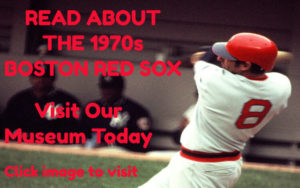The 1980 Boston Red Sox: The Last Crash Of Unfulfilled Hope
The late 1970s had been a time of unfulfilled hope for the Boston Red Sox. After reaching Game 7 of the World Series in 1975, the Red Sox seemed to be a rising dynasty in the making. But that was followed with underachievement in 1976, a close pennant race loss in 1977, a devastating loss in 1978, and modest slipback in 1979. The 1980 Boston Red Sox completed the decline, falling to mediocrity and ending a short era in franchise history.
Don Zimmer had managed the Red Sox since the middle of the 1976 season and this would be his final year in Boston. The offense, long the strength of the team, was still good—sixth in the American League in runs scored—but it was no longer great. An inability to draw walks was the big reasons. Boston ranked in the top three in the AL for batting average doubles and home runs, but they were 10th in walks. It would take over two decades for Moneyball to arrive at Fenway Park.
Dave Stapleton was the poster child of the Red Sox offense—he batted .321 and slugged .463, excellent numbers for a second baseman. But he managed to draw only 13 walks all season, and his .338 on-base percentage was only above average as a result. Stapleton, like the Red Sox, was more glitter than substance when it came to offense.
This isn’t to say there weren’t good hitters, Stapleton included. Carlton Fisk had a solid stat line of .353 OBP/.467 slugging. Fred Lynn posted a .383/.480 year and Dwight Evans was at .358/.484. Jim Rice slugged .504, hit 24 home runs and produced 86 RBIs. Although Rice was almost as impatient as Stapleton, with the left fielder’s 30 walks being the second-lowest on the team.
Carl Yastrzemski was in the twilight of his career and now a DH, but he still produced, at .350/.462 and shortstop Rick Burleson had a .341 on-base percentage. The team also signed Tony Perez to play first base. Perez had been with the Cincinnati Reds, and Boston fans remembered him for hitting the home run that turned the momentum in that seventh game of the 1975 World Series. Now 38-years-old, Perez could still produce, hitting 25 home runs and his 105 RBIs led the team.
So while the offense was not as good as its batting average and home run numbers might have suggested, it was still not the problem. That honor belong to a pitching staff that ranked 12th in the American League in ERA.
Mike Torrez and Dennis Eckersley were the top two starters and they combined for a 21-30 record, and ERAs of 5.08 and 4.28 respectively. John Tudor was a nice young lefthander who had a 3.02 ERA, but he didn’t get enough starts to make an impact. The only positives were closer Tom Burgmeier, who saved 24 games with 2.00 ERA, and the all-purpose machine, Bob Stanley.
The “Steamer”, as he was known started 17 games, made 35 relief appearances, won 10, saved 14 and had an ERA of 3.39. On a staff with few bright spots, Stanley could do everything.
The first two games of the year at the Milwaukee Brewers were a foreshadowing. The Red Sox trailed the Brewers 5-3 in the ninth inning of Opening Day, when home runs by Yaz and third baseman Butch Hobson tied the game. Dick Drago, the now-aging hero of the 1975 ALCS, came on in the ninth. With the bases loaded and two outs, Drago gave up a grand slam to Brewer rightfielder Sixto Lezcano and the Red Sox lost 9-5.
Torrez pitched the second game and was battered 18-1. Later on in May, when the Brewers came to Fenway, Torrez started again and lost 19-8. By the end of May, Boston’s record was 22-23. They trailed the New York Yankees by 6 ½ games.
New York was on their way to a big year with 103 wins and while the Baltimore Orioles were amidst the pack in May, they would also catch fire and win 100 games. Boston wasn’t going to compete with that, though they did play good baseball throughout the month of August and their record got up to 70-56 when the month of September began. By the standards of today, the Red Sox would have been in the hunt for the second wild-card spot.
But the standards of 1980 were quite different, and in either case, Boston’s September play marked the end of the Zimmer era. They lost four straight at home to New York, then went to the Bronx and lost two of three. To show they weren’t playing favorites in the AL East race, the Red Sox went to Baltimore and lost two of three and then lost four straight to the Orioles at home.
Zimmer was fired prior to the finale of the four-game set with Baltimore and Johnny Pesky managed out the string in Boston. They concluded the season by being swept at home by the Toronto Blue Jays, a last-place 67-95 team. The Red Sox finished 83-77, fifth in the seven-team AL East.
Big moves were made in the offseason. Burleson, Hobson and Lynn were all traded, while Fisk was allowed to leave via free agency for the Chicago White Sox. The latter two changes were particularly rattling. Lynn’s MVP season in his rookie year of 1975 made him the face of the presumed dynasty on the rise. Fisk was a local hero with New England roots and seen as the heart and soul of the team.
By parting company with both, the Red Sox left little doubt there were going in a new direction. It would take six years for that new direction to bear fruit and the Fenway Faithful entered the offseason following 1980 wondering when their team would be relevant again.


